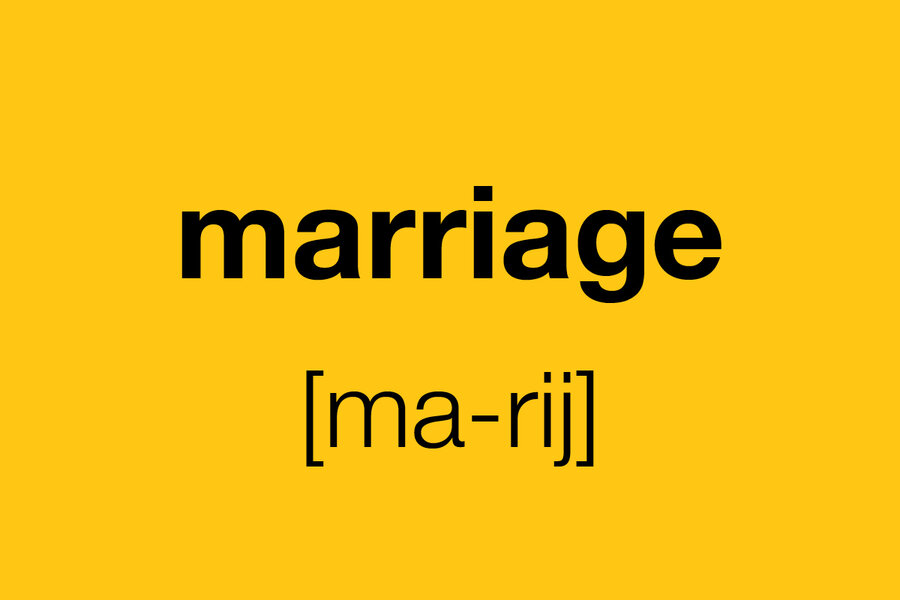How marriage words evolved over centuries
Loading...
Recent announcements on Equally Wed, a platform for planning LGBTQ+ weddings, reveal couples choosing nontraditional words to describe themselves and their celebrations. Broom is a combination of bride and groom, and is used by nonbinary people who feel they don’t fit neatly into either category; so is gride. A gender-neutral word for people committing themselves to one another is marrier. These aren’t the first changes in the words for a wedding’s most crucial participants. Even man and wife, husband, and groom were once innovations.
In school, I was taught that man and mankind were “universal” words that included women, though this seemed specious even to 8-year-old me, and such usage is now discouraged. In Old English, though, it was true, for the most part. In a 10th-century homily, Christ is described as “the son of one man,” that “man” being the Virgin Mary; in a retelling of Genesis, God created “the two men, Adam and Eve.” “Man” must mean “human being” or “person,” or these lines make no sense.
When Old English writers wanted to specify someone’s sex, they often used wer for males and wif for females. Another homily relates that in the beginning God created “twegen [two] men, wer & wif” – two humans, man and woman, male and female. In Old English, wif sometimes meant “wife” as well as “female person,” and wer could mean “husband” as well as “male person.” But while wife endures as the word we know today, wer disappeared around 1200, now found only in the compound name of a mythical monster, the werewolf. At the same time man narrowed its meaning from “human” to “male human” in particular.
Husband gained popularity in the 13th century. It derives from the Old Norse husbondi, literally “house-dweller,” and at first meant “master of the house,” akin to the Latin paterfamilias. Since in this era the head of a household was by definition the male spouse, husband easily applied to the latter role too.
Grooms did not appear until much later, however. According to the Oxford English Dictionary, English inherited bride – a woman who is getting married or is recently married – from Germanic, making it an extremely old word. Her male counterpart was the brydguma, literally the “brideman” – guma or gome was a poetic word that, like wer, specified male sex. Brydgome became bridegroom after gome became obsolete in the early 16th century, perhaps because groom was already in common use and resembled it. Groom too referred to a person of male sex, but was less august than gome – a groom was a boy-child or a servant. By the 17th century, groom had decoupled from bride and could stand alone as the male spouse-to-be.





